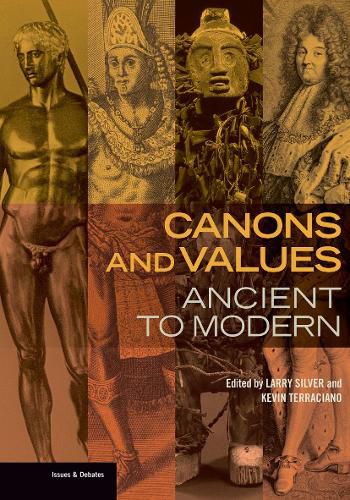Readings Newsletter
Become a Readings Member to make your shopping experience even easier.
Sign in or sign up for free!
You’re not far away from qualifying for FREE standard shipping within Australia
You’ve qualified for FREE standard shipping within Australia
The cart is loading…






A critical rethinking of the way canons are defined, constructed, dismantled, and revised. A century ago, all art was evaluated through the lens of European classicism and its tradition. This volume explores the foundations of the European canon, offers a critical rethinking of ancient and classical art, and interrogates the canons of cultures that have often been left at the margins of art history. It underscores the historical and geographical diversity of canons and the local values underlying them.
Twelve international scholars consider how canons are constructed and contested, focusing on the relationship between canonical objects and the value systems that shape their hierarchies. Deploying an array of methodologies-including archaeological investigations, visual analysis, and literary critique-the authors examine canon formation throughout the world, including Africa, India, East Asia, Mesoamerica, South America, ancient Egypt, classical Greece, and Europe. Global studies of art, which are dismantling the traditionally Eurocentric canon, promise to make art history more inclusive. But enduring canons cannot be dismissed. This volume raises new questions about the importance of canons-including those from outside Europe-for the wider discipline of art history.
$9.00 standard shipping within Australia
FREE standard shipping within Australia for orders over $100.00
Express & International shipping calculated at checkout
A critical rethinking of the way canons are defined, constructed, dismantled, and revised. A century ago, all art was evaluated through the lens of European classicism and its tradition. This volume explores the foundations of the European canon, offers a critical rethinking of ancient and classical art, and interrogates the canons of cultures that have often been left at the margins of art history. It underscores the historical and geographical diversity of canons and the local values underlying them.
Twelve international scholars consider how canons are constructed and contested, focusing on the relationship between canonical objects and the value systems that shape their hierarchies. Deploying an array of methodologies-including archaeological investigations, visual analysis, and literary critique-the authors examine canon formation throughout the world, including Africa, India, East Asia, Mesoamerica, South America, ancient Egypt, classical Greece, and Europe. Global studies of art, which are dismantling the traditionally Eurocentric canon, promise to make art history more inclusive. But enduring canons cannot be dismissed. This volume raises new questions about the importance of canons-including those from outside Europe-for the wider discipline of art history.